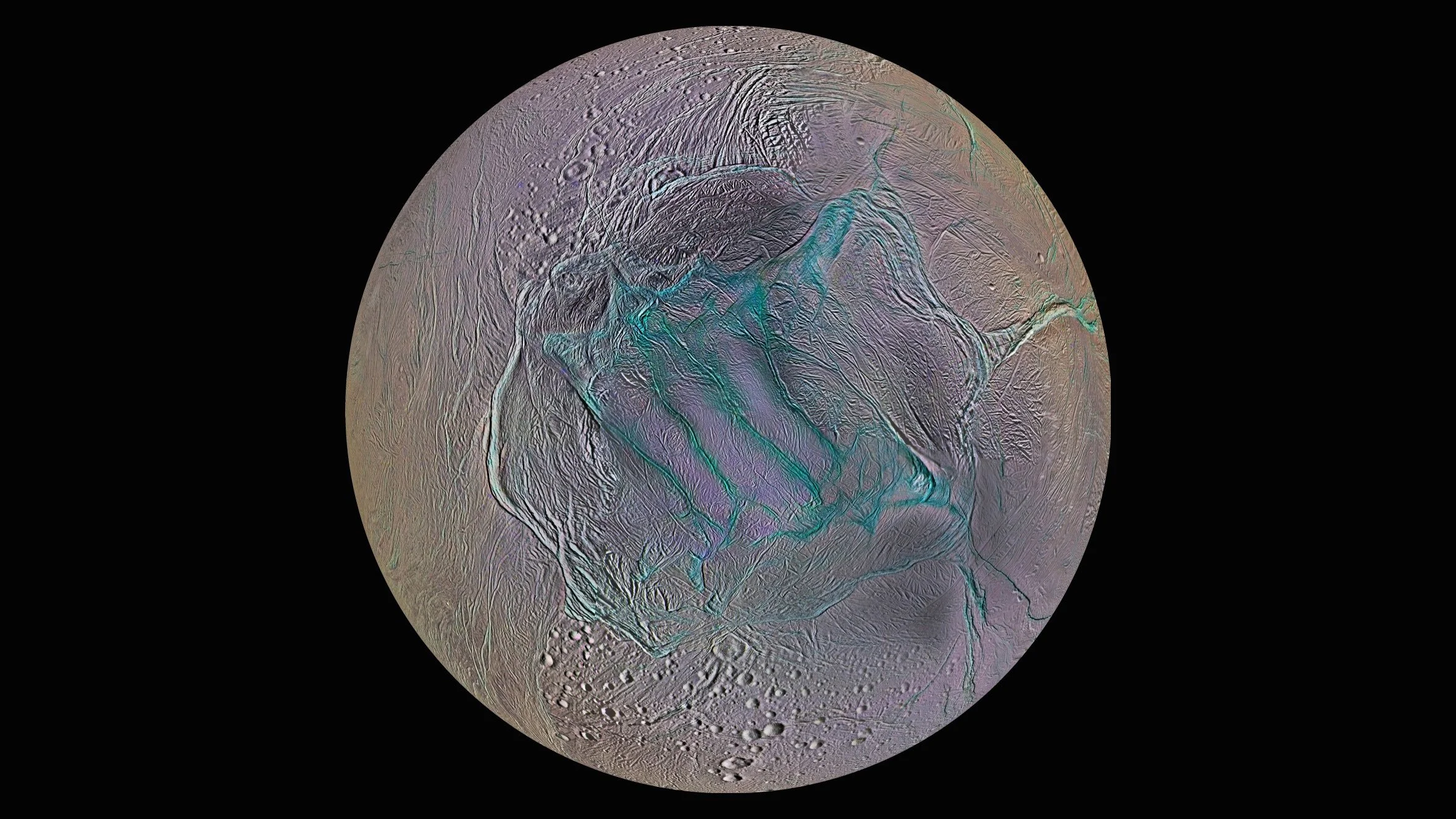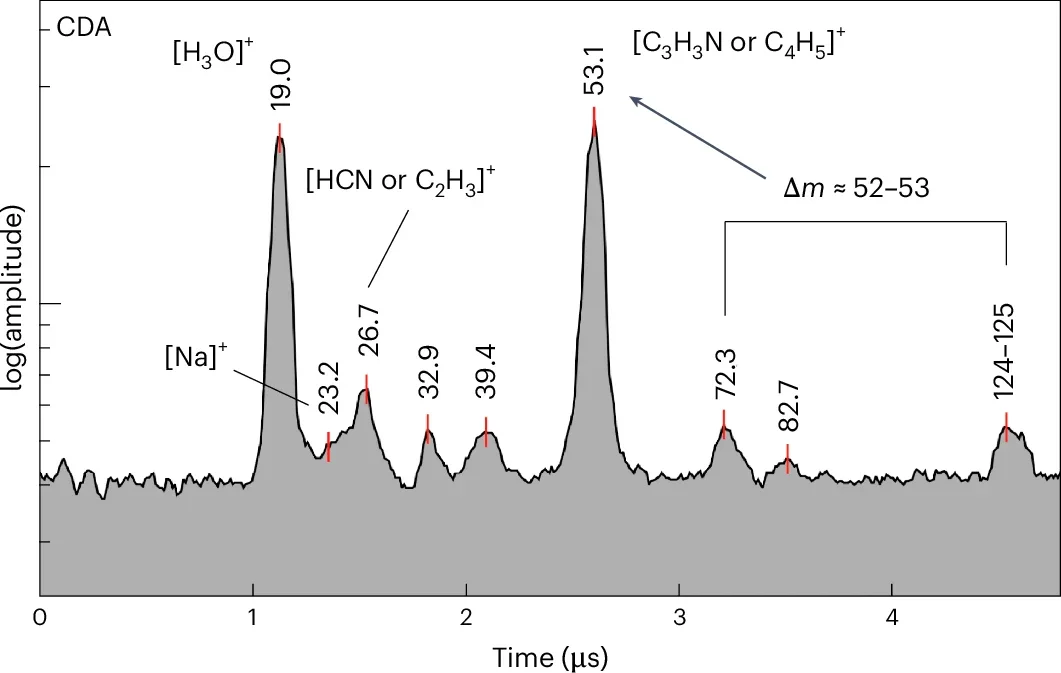Cassini data reveals new information on Enceladus’ ice grain composition
By: Catherine Maggiori
Synopsis: In this article, we talk about new interpretations of Cassini data, revealing that freshly ejected Enceladus ice grains contain a variety of organic compounds.
Author info: Dr. Catherine Maggiori is an astrobiologist and microbiologist. You can find her writing about science, attempting to set up a Bluesky account, or at the climbing gym.
A Cassini image showing the plumes of Enceladus with backlighting from the Sun (NASA/JPL-Caltech/SSI)
Last August here at SAGANet, we talked about how Cassini is the gift that keeps on giving.
In addition to new revelations on Saturn’s global energy budget, in the last 5 years Cassini data has produced information on:
A subsurface ocean on Mimas: New analyses of Cassini orbital data show that Saturn’s moon Mimas (a body previously thought geologically dead) harbours a global subsurface ocean beneath a ~20 - 30 km icy shell, which probably formed only ~5 - 15 million years ago.
The composition of Saturn’s D-ring: Material sampled during Cassini’s Grand Finale has shown that Saturn’s innermost D-ring is relatively organic-rich, silicate-rich, and water-poor compared to the main rings.
Deep zonal winds in Saturn’s interior: Data also from Cassini’s Grand Finale indicate that Saturn’s zonal winds extend down thousands of kilometres (~7000 - 9000 km), highlighting the complexity of Saturn's atmospheric dynamics and the importance of these relatively small-scale wind patterns in shaping the Saturn’s gravity field.
Titan’s hydrocarbon sea surface composition: Using bistatic radar data from Cassini’s flybys of Titan, new descriptions of the composition and roughness of Titan’s North Pole seas (e.g. Kraken Mare, Ligeia Mare) have been produced, potentially indicating active tidal currents.
Phosphates in the ocean of Enceladus: Analyses of mass spectra of ice grains ejected from Enceladus’ plumes reveal the presence of sodium phosphates. Additionally, modelling of Cassini data indicates phosphorus concentrations in the moon’s ocean at least 100-fold higher than in Earth’s oceans.
Some quick facts on Cassini’s accomplishments over its lifespan. For more information, check out https://science.nasa.gov/mission/cassini/quick-facts/.
We now have a new paper from Khawaja et al., released in October of this year, re-examining data from Cassini’s Cosmic Dust Analyzer (CDA).
The study focuses on Saturn’s icy moon Enceladus, which is one of the best-documented ocean worlds in our solar system. Enceladus ejects plumes of water-ice grains and vapour through fractures near its south pole. These ejecta originate from a subsurface salty ocean that lies above a rocky core, where hydrothermal activity likely occurs.
An enhanced view of Enceladus’ southern pole. Using infrared and ultraviolet data from Cassini, you can see Enceladus’ "tiger stripes," vents for the moon’s subsurface ocean.
In Enceladus’ subsurface ocean, liquid water, rock-water interactions, and a suite of bio-essential chemical elements exist. In fact, with the recent detection of phosphates in Enceladus’ plumes, it’s now confirmed that the moon contains all 6 CHNOPS elements.
Cassini’s CDA has recorded hundreds of mass spectra of E-ring ice grains; these ice grains are relatively old and have been exposed to space weathering and circulation in the Saturnian system for days to decades. In contrast, the present work examines freshly ejected ice grains sampled directly from the plume during Cassini’s E5 fly-by, the fastest of all of its fly-bys.
During most observations, Cassini recorded E-ring grains at relatively modest velocities of ~4 - 12 km/s, whereas the E5 flyby occurred at ~17.7 km/s. E5 thus provided a rare opportunity to explore new, high-energy fragmentation pathways. Water-cluster species typically obscure organic signals at lower impact speeds, so E5 data allowed for better detection of complex organics.
Khawaja et al. found that Cassini’s high-velocity E5 flyby revealed a richer diversity of organics than previously observed in Saturn’s E-ring grains. Mass spectra from the CDA indicated the presence of aliphatic and aromatic compounds, alongside esters, ethers, and tentative nitrogen- and oxygen-bearing species.
From Fig. 5 of Khawaja et al., displaying the CDA spectrum of a plume ice grain. Species potentially containing nitrogen and oxygen may be present.
These compounds likely formed through hydrothermal reactions between Enceladus’ ocean and its rocky core, indicating that Enceladus’ ocean hosts complex organic chemistry, the kind associated with prebiotic environments on Earth. Enceladus’ subsurface ocean is not only salty and geochemically active, but also potentially capable of synthesizing and/or preserving complex organic molecules.
Importantly, the fact that these molecules were detected in fresh ice grains (i.e. those unexposed to radiation or long-term processing in Saturn’s E-ring) shows that they originate deep within the moon, not from contamination or external alteration. This finding further reinforces that Enceladus now satisfies nearly all the classic criteria for a “habitable world”: liquid water, energy sources, and organic building blocks.
I’m sure future results from Cassini will continue to illuminate Enceladus and the Saturnian system in general. For Enceladus, future missions have also been conceived from ESA and China’s Deep Space Exploration Laboratory (DSEL).




